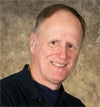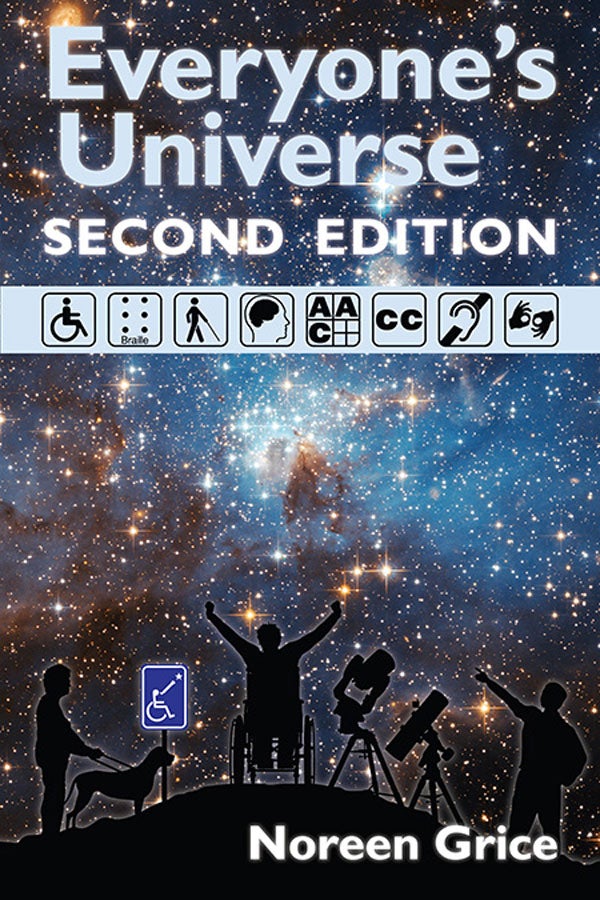What would you do? Approximately one in five individuals copes with a disability — such as visual and/or hearing impairments, communication challenges, or wheelchair confinement. None of us is immune. An illness, accident, or simply the aging process can leave a once able-bodied person with a disability. And it’s quite possible that such an individual will show up at a public star party you or your club is conducting.
Having a disability shouldn’t prevent anyone from active participation in astronomy. In fact, many have overcome handicaps to make notable astronomical contributions. In 1783, astronomer John Goodricke, who was deaf/mute, was awarded the Copley Medal by the Royal Society of England for his work on variable stars. Until 1932, Edwin Frost was both director of Yerkes Observatory in Wisconsin and editor of The Astrophysical Journal despite having become blind 11 years earlier. Blindness is no hindrance to modern-day astronomers — for example, Wanda Diaz-Merced, though blind, is an active radio astronomer with NASA’s Goddard Space Flight Center in Maryland and a Ph.D. student at the University of Glasgow in the United Kingdom.
But perhaps the most celebrated astronomer (well, physicist) with a mobility and communications disability is Stephen Hawking. Despite being confined to a wheelchair and dependent on a computerized voice system to speak (a result of having contracted Lou Gehrig’s Disease), Hawking has used his mathematical genius to probe some of cosmology’s greatest mysteries.
Modern technology has brought research astronomy into our homes — a boon to individuals with disabilities. Computer users with mobility or hearing problems can access robotic telescopes or work on Internet projects like Zooniverse’s Galaxy Zoo, Moon Zoo, and Planet Hunters. To support the upcoming Lunar Atmosphere and Dust Environment Explorer mission, NASA is asking volunteers to make meteor counts using FM radio receivers. Find details of this project, a nice fit for visually impaired space enthusiasts, at http://lunarscience.nasa.gov/articles/radio-meteor-counts.
But back to the original question. What would you do should a person in a wheelchair approach you at a star party? Noreen Grice has some ideas. She became an advocate of astronomy for visitors with disabilities after a planetarium show she conducted for a group of children who were blind. An assessment of the program according to the kids? “It stunk!”
Spurred by the incident, Grice began to research strategies for presenting astronomy to individuals with a variety of disabilities. Ultimately, she established You Can Do Astronomy LLC — a company whose mission is to make astronomy and space science accessible to people of all abilities. Her book Everyone’s Universe: A Guide to Accessible Astronomy Places is a must-read for anyone involved in astronomy outreach and should be in the possession of every astronomy club and science facility.
Everyone’s Universe is designed to educate both astronomy clubs and participants with disabilities. Suggestions for accessible outreach efforts include eyepiece extenders for those using wheelchairs, tactile books like Grice’s Touch the Stars (National Braille Press, 2002) for readers who are visually impaired, picture boards to assist individuals with communication challenges, and simple paper and pen or iPad to interact with a person who cannot hear. Everyone’s Universe also provides a state-by-state listing of accessible astronomy facilities, such as planetariums and observatories.
But why wait for a person with a disability to show up at your star party? Be proactive and organize an accessible star party in your community! In Everyone’s Universe, Grice spotlights Project Bright Sky, developed by the Pomona Valley Amateur Astronomers (PVAA) in California. Through this project, the PVAA conducts private star parties for those who are visually impaired and offers tactile astronomy classes at local Braille institutes. For more on You Can Do Astronomy and Project Bright Sky, visit www.youcandoastronomy.com and http://brightsky.pvaa.us, respectively.
As we strive to infuse the excitement of astronomy into the public, we mustn’t neglect the 20 percent of the population suffering from some kind of disability. Who knows? That person approaching your telescope might be a potential contributing member of your astronomy club, possibly even a future scientist. You can help make the universe more accessible!
Questions, comments, or suggestions? Email me at gchaple@hotmail.com. Next month: some lunar letters. Clear skies!











